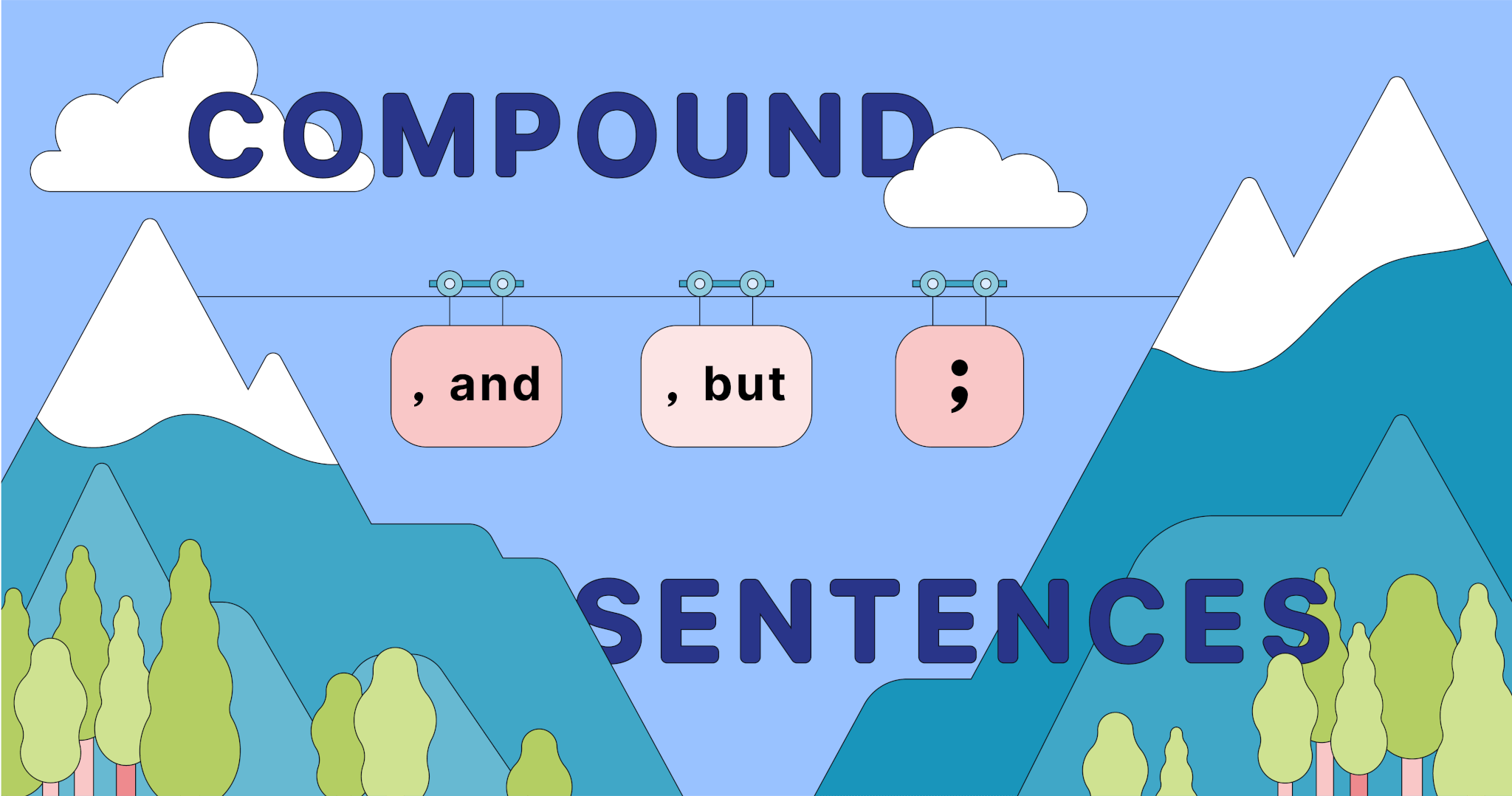Understanding the Basics of a Compound Sentence
A compound sentence is a sentence that combines two or more independent clauses using coordinating conjunctions, semicolons, or conjunctive adverbs. The keyword compound sentence helps us understand that this sentence type involves two equal parts, each able to stand on its own as a complete sentence. A compound sentence is different from a simple sentence, which has only one independent clause. In fact, the term compound sentence appears frequently in grammar lessons because it forms a foundational part of writing. A compound sentence improves fluency and rhythm in writing. A well-formed compound sentence includes subjects, verbs, and connectors. The key to a great compound sentence lies in balance. If one part is weaker than the other, the compound sentence loses its strength. Writers often use a compound sentence to show contrast, connection, or consequence. When you understand how to build a compound sentence, you gain more control over how your message flows. By using a compound sentence, you avoid overly choppy writing and improve clarity. Anyone who writes essays, articles, or creative work will benefit from using a compound sentence correctly. In this article, we’ll explore what makes a compound sentence, share examples, and provide practical tips to help you write with confidence.
What Makes a Sentence Compound?
To create a compound sentence, you must start with two independent clauses. Each independent clause contains a subject and a verb and expresses a complete thought. When you connect these clauses using coordinating conjunctions like “and,” “but,” or “so,” the sentence becomes a compound sentence. For example: “I wanted to go to the store, but it started to rain.” This is a compound sentence because “I wanted to go to the store” and “it started to rain” are both complete ideas joined by the conjunction “but.”
Structure of a Compound Sentence
The typical structure of a compound sentence includes:
- Independent Clause + Coordinating Conjunction + Independent Clause Example: “She loves pizza, and he prefers pasta.”
Other ways to create a compound sentence include:
- Independent Clause + Semicolon + Independent Clause Example: “It was getting late; we decided to go home.”
- Independent Clause + Semicolon + Conjunctive Adverb + Comma + Independent Clause Example: “He didn’t study; therefore, he failed the test.”
All these forms show different ways to write a compound sentence, offering flexibility and variety in your writing.
Coordinating Conjunctions in Compound Sentences
To build a solid compound sentence, coordinating conjunctions are key. The most common ones are:
- For
- And
- Nor
- But
- Or
- Yet
- So
You can remember them with the acronym FANBOYS. These words link ideas while showing the relationship between the clauses. For example: “I wanted ice cream, but the shop was closed.” This is a compound sentence using the conjunction “but” to contrast two ideas.
Examples of Compound Sentences
Here are several examples of compound sentences to demonstrate their function in real writing:
- She studied hard for the test, and she passed with flying colors.
- I could go to the beach, or I could stay home and read.
- He didn’t call me back, nor did he send a message.
- It was raining heavily, so we canceled the picnic.
- She wanted to stay, yet she knew it was time to go.
In each compound sentence, both parts are complete sentences on their own, and they’re joined properly with a conjunction or punctuation.
Difference Between Compound and Other Sentence Types
Understanding how a compound sentence compares with other sentence types is helpful:
- Simple sentence: Has only one independent clause. Example: “She walked to the park.”
- Complex sentence: Has one independent clause and one or more dependent clauses. Example: “Although it was cold, she went for a walk.”
- Compound-complex sentence: Contains at least two independent clauses and at least one dependent clause. Example: “She left early because she was tired, but she promised to return.”
The compound sentence stands out by having only independent clauses, no dependent ones.
Why Use Compound Sentences?
A compound sentence improves writing by:
- Adding variety to sentence structure
- Showing clear relationships between ideas
- Making writing sound more fluent and less robotic
- Avoiding repetitive or overly simple writing
Writers often rely on a compound sentence to build rhythm and clarity into their work. Whether you’re writing fiction, essays, or speeches, a compound sentence can elevate your writing.
Common Mistakes with Compound Sentences
Some common errors to avoid when writing a compound sentence include:
- Comma Splice: Joining two independent clauses with just a comma. Wrong: “He went home, he forgot his keys.” Correct: “He went home, but he forgot his keys.”
- Run-On Sentences: Failing to use proper punctuation or conjunctions. Wrong: “She likes coffee he prefers tea.” Correct: “She likes coffee, and he prefers tea.”
- Misusing Conjunctions: Using the wrong conjunction changes the meaning of the compound sentence. Choose one that matches the relationship you want to express.
Being precise with structure ensures your compound sentence is grammatically sound.
Tips for Writing Strong Compound Sentences
Here are practical tips for writing an effective compound sentence:
- Make sure both clauses can stand alone. Each part should make sense on its own.
- Use punctuation properly. Don’t forget the comma before the conjunction.
- Choose the right conjunction. Think about whether your ideas contrast, add up, or show cause-effect.
- Vary your sentences. Don’t use compound sentences all the time; mix them with other types for balance.
- Edit for clarity. Read your compound sentence out loud to ensure it flows naturally.
Practicing these tips will make your writing clearer and more engaging.
Compound Sentences in Writing
Writers use compound sentences in different genres:
- Narrative writing: To connect related actions or events Example: “He opened the door, and the dog ran out.”
- Academic writing: To present complex ideas with clarity Example: “The theory was valid, but the evidence was lacking.”
- Persuasive writing: To reinforce a point using two related facts Example: “You should vote today, and you should encourage others to do the same.”
In each case, a compound sentence helps link ideas meaningfully.
Compound Sentences and Reading Comprehension
For readers, a compound sentence can aid in comprehension by connecting related points smoothly. Instead of reading two separate short sentences, the compound sentence shows how the ideas relate. This makes information easier to digest. Students who learn how to identify and create a compound sentence often improve both writing and reading skills.
Activities for Practicing Compound Sentences
To master the use of compound sentences, try these activities:
- Combine two short sentences into one compound sentence. Example: “I was late. I missed the bus.” becomes “I was late, so I missed the bus.”
- Identify compound sentences in a paragraph. Highlight all the sentences that contain two independent clauses.
- Write a paragraph using only compound sentences. This helps reinforce the structure and build fluency.
These exercises improve your ability to use a compound sentence naturally in writing.
Teaching Compound Sentences to Kids
When teaching children how to write a compound sentence, keep it simple:
- Use clear examples
- Introduce FANBOYS one at a time
- Practice with sentence strips
- Show how two small sentences can become one larger compound sentence
Making it fun and hands-on can help kids grasp the concept faster.
Editing Compound Sentences for Better Writing
Editing is where a weak compound sentence can become strong. Ask yourself:
- Are the clauses balanced?
- Is the punctuation correct?
- Does the conjunction make sense?
- Would a different sentence type be more effective?
Editing helps ensure each compound sentence adds value to your writing.
FAQs About Compound Sentences
Q: Can a compound sentence have more than two clauses? A: Yes. You can link more than two independent clauses using multiple conjunctions. Example: “He came early, she arrived late, and they both left together.”
Q: Do I always need a comma in a compound sentence? A: Use a comma before the conjunction if both parts are full independent clauses. Example: “I like tea, and he likes coffee.”
Q: What’s the difference between a semicolon and a conjunction in a compound sentence? A: A semicolon links closely related independent clauses without a conjunction. Example: “She loves to sing; he prefers dancing.”
Final Thoughts on Compound Sentences
The compound sentence is a powerful tool in writing. It connects two or more ideas in a way that adds rhythm, meaning, and clarity. Learning how to identify and use a compound sentence will improve your grammar, writing style, and communication skills. Whether you’re in school or in a professional setting, mastering the compound sentence opens new doors for expression. Remember to use the FANBOYS conjunctions wisely, check your punctuation, and always aim for clarity. Once you’re comfortable with the compound sentence, your writing will become more polished and effective. Embrace the compound sentence as one of the essential building blocks of great writing
Whether you’re a beginner or an expert, start from our homepage for best results.











Leave a Reply